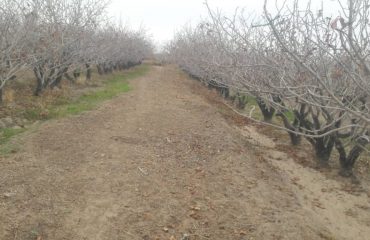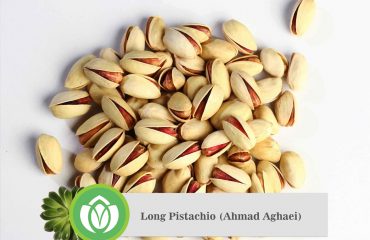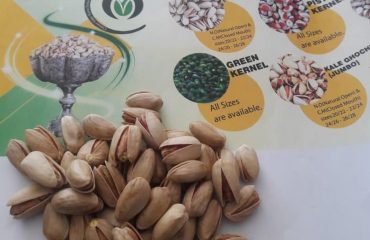Iranian Pistachio family is 75 genera and 600 species of which 9 species are edible and among the most important edible species in Iran can be mentioned:
Pistachio vera (common pistachio), pistachio motica (wild pistachio or pistachio), pistachio khinjuck (according to statistics obtained from 73 of the various pistachio producing countries in 2007), only seven countries have commercial production and out of a total of 400,000 tons of pistachio Production in the world is Iran with 57% of production, USA with 17% and Turkey with 13% and Kerman with 4.81% of the total area under cultivation of the largest pistachio trees. Iran and the world are the major varieties of Kerman pistachios, Kaleh Ghuchi, Fandaghi, Akbari, Sefid Shell, Amiri, Shasti, and Jundaghi.
History of Pistachio in Iran
The appearance of pistachio in Iran goes back to the Achaemenid period, about 4,000 to 5,000 years ago. It is thought that wild pistachio forests and automobiles were domesticated and cultivated in Iran about 3 to 4,000 years ago and then transferred from Iran to other parts of the world, especially around the Mediterranean Sea.
The origin of the pistachio is attributed to the Achaemenid period and Kerman. After Islam Qom has been introduced as the most important pistachio area of Iran. Its historical background goes back to the first half of the AH century and the earliest writings on pistachio Damghan, Semnan and Qazvin are attributed to the 7th century and pistachio cultivation in Kerman to the 12th century. Iranian pistachios are now named after the historical, transportation and production area of the same place as Damgani, Qazvini, Ravari, Sabzevari and Qomi.
It is worth noting, however, that in addition to the above mentioned pistachios, there are also divisions by shape. it such as: Smiling, Baluchi, Kalhe Ghuchi, White Pistachio, Green Pistachio and Dagger. These different pistachio varieties have different ripening times and are divided into early and late varieties, which arrive early in late August and late October. Pistachio is a tropical fruit. This product was named in 1737 by a person named (Linnaeus) from Spain under the scientific name (anacardiacae).
Unlike almonds and walnuts, pistachio tree is a part of the tree and its male and female are separated. Pistachio is one of the fruits that are fertile one year and less fertile next year. The appearance of pistachio in Iran goes back 4000 years. The pistachio tree is derived from the Iranian name in Greek, Latin, European, Arabic, Turkish, Russian, Japanese and other languages. The name of the tree when it was imported to Iran was in the Persian language “pistachio” and then became (pistachio), the Latin word pistachio is derived from this word. Pistachio gardens have been established in Iran since that time.
Dr. Fanlari derives the Persian word for pistachio from the northern parts of Kerman and the word pistachio is a very ancient Persian word originating from the dialect of peoples settled in the Kerman states.




